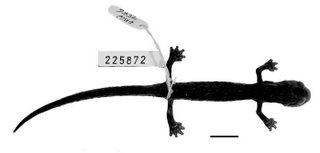
Spotted on information aesthetics, IBM's Many Eyes looks very cool. It's a way to share visualisations of data.

Spotted on information aesthetics, IBM's Many Eyes looks very cool. It's a way to share visualisations of data.
In the spirit of "release early, release often", a preliminary version of the TreeBASE name mapping project is now online at TBMap. It's a bit crude, the graphs look awful because they're generated on the fly on a Linux box using GraphViz, but you'll get the idea. I'll try and tidy it up and add a few more visuals to it next week after the EOL Informatics meeting at Woods Hole. There are also some missing mappings to add to the database.

To avoid being charged with being consistent (unlikely, I know), despite being underwhelmed by phylogenetic names in the context of TreeBASE (see conversation with David Marjanović in the previous post), I think they could be very useful in annotating phylogenetic trees.
The Ant Room has a nice post on Visualizing the tree of life, with some cool links. And just to balance that, Donat Agosti drew my attention to Ford Doolittle and Eric Bapteste's PNAS article "Pattern pluralism and the Tree of Life hypothesis" doi:10.1073/pnas.0610699104.

E. O. Wilson's much used quote features prominently on the EoL Informatics web site. This project involves the Smithsonian Institution, Field Museum, Harvard University, Biodiversity Heritage Library, and the MBL. I will be at the Informatics Workshop next month. For my own toy efforts in this direction, see iSpecies.

Comments by David Marjanović elsewhere on this blog (here and here) about TreeBASE, classification and Phylocode have prompted me to write a little bit about why I'm underwhelmed by the Phylocode. Suppose I have the question: How do I answer this? Well, my approach is to do the following. Firstly, I attempt to map every name in TreeBASE onto a name in an external database, such as NCBI Taxonomy, uBio, etc.

Here's a fun example of how databases get out of sync, making them harder to link up. TreeBASE taxon T4628 is labelled Bolitoglossa sombra , which doesn't exist in NCBI's taxonomy database, which is odd as the study by Mueller et al. (S1139) is a molecular phylogeny (doi:10.1073/pnas.0405785101), and the taxon concerned has had its whole mitochondrial genome sequenced.
The funding of pPOD mentioned earlier today motivates me to write some notes on what I think "core database technologies for enabling the integration of AToL data" could, or indeed, should be about. Much of what follows I've mentioned elsewhere on the iPhylo blog (for example here and related blogs SemAnt and iSpecies) but it seems useful to bring this together here.

Some good news! pPOD, a NSF-funded project on integrating data from AToL (A Tree of Life) projects has been funded. Val Tannen (right) is the co-ordinating PI. I'm a consultant, which means more opportunities to mouth-off about phylogenetic data and databases (for earlier examples see TreeBASE rocks, TreeBASE talk at CIPRES, and Towards the ToL database - some visions). The project is called pPOD, and has a wiki.
Browsing Postgenomic.com eventually lead to Egon Willighagen's post about Including SMILES, CML and InChI in blogs, which talks about the sort of things I'd like to do in biodiversity informatics. I'm particularly keen on using blogs as annotation tools. One more for the reading list... (see also RDFa.
Very interesting post by Richard Cave on a PLoS blog concerning unique author identification. Here's the opening paragraph. There is also some interesting commentary.